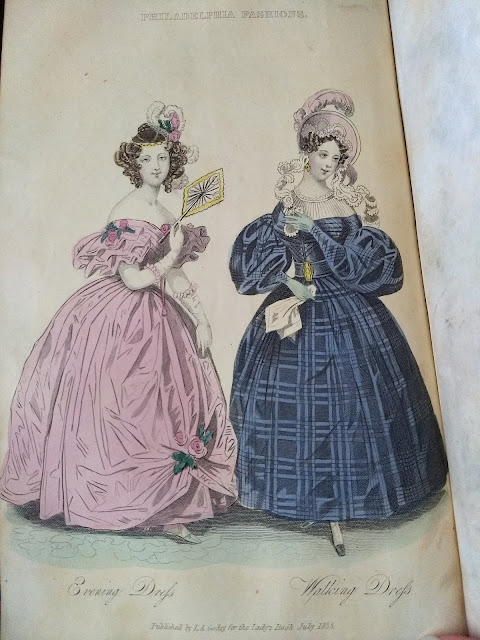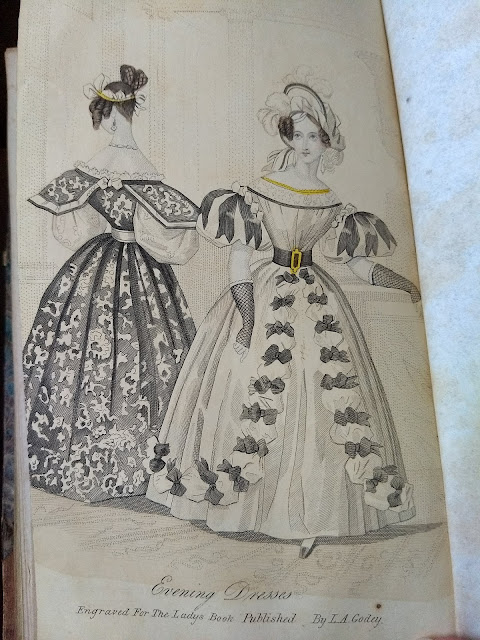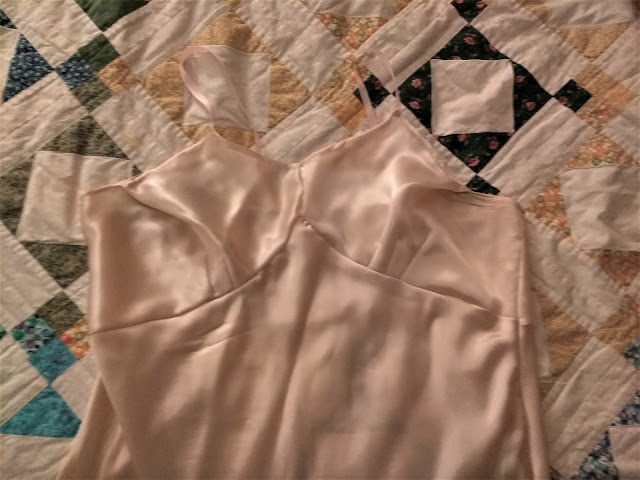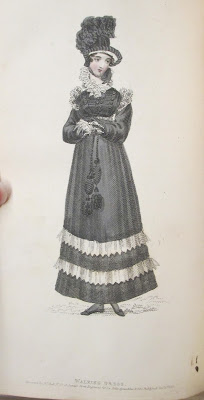June 1835 DESCRIPTION OF THE FASHIONS. FIRST DRESS. The robe is composed of satin Memphis , a black ground figured in white in an Egyptian pattern. The ground is a plain silk of the richest ground, the pattern satin. The corsage is cut low, tight to the shape, and trimmed with a standing tucker of tulle illusion . Sleeves à la folle ,* of tulle illusion , surmounted by mancherons of the material of the dress, bordered with satin riband, a white ground lightly figured, an edged with black. The ceinture to correspond, is tied in short bows and long floating ends. The hair is parted on the forehead, disposed in luxuriant curls at the sides, and arranged in perpendicular bows formed of plaited braids behind. It is ornamented in a light and novel style, with a half-wreath formed of puffs of rich white gauze riband, which goes round the back of the head, and terminates in knots over each temple. * à la folle - literally "madwoman-style", from the same origin c...








